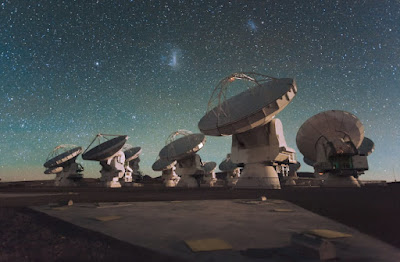Exploring Black Holes, the Milky Way, and the Event Horizon Telescope
1. Black Holes: Cosmic Enigmas
What Are Black Holes?
Black holes are mysterious cosmic objects with gravitational forces so intense that nothing, not even light, can escape their grasp. They form when massive stars collapse under their own gravity, creating an infinitely dense point called a singularity. The boundary beyond which nothing can escape is known as the event horizon1.
Types of Black Holes
- Stellar-Mass Black Holes: These form from the remnants of massive stars that have exhausted their nuclear fuel. When the core collapses, it can become a black hole. Stellar-mass black holes typically have a mass between 3 to 20 times that of our sun.
- Supermassive Black Holes: These giants reside at the centers of galaxies, including our Milky Way. They have masses ranging from hundreds of thousands to billions of times that of the sun. The supermassive black hole at the heart of our galaxy is called Sagittarius A* (Sgr A*).
Sagittarius A: The Heart of Our Galaxy*
- Sagittarius A* (Sgr A*) is the supermassive black hole lurking at the center of the Milky Way. It’s a cosmic heavyweight, with a mass of about 4.3 million times that of our sun.
- Located in the constellation Sagittarius, Sgr A* is shrouded in cosmic dust, making it invisible to optical telescopes. However, radio telescopes can penetrate this veil and reveal its secrets.
2. The Milky Way: Our Cosmic Home
What Is the Milky Way?
The Milky Way is our home galaxy, a vast collection of stars, planets, gas, and dust. When we look up at the night sky, we see a hazy band of light stretching across it—this is the Milky Way. Our solar system resides within this galactic disk.
Structure of the Milky Way
- Galactic Center: At the heart of the Milky Way lies the Galactic Center, where Sgr A* resides. It’s a bustling region with intense gravitational forces and energetic phenomena.
- Spiral Arms: Our galaxy has spiral arms, like cosmic pinwheels. We’re located in one of these arms, known as the Orion Arm or Local Spur.
- Stellar Population: The Milky Way contains 100–400 billion stars, each with its own story. From ancient red dwarfs to massive blue giants, our galaxy is a tapestry of stellar diversity.
3. The Event Horizon Telescope: Peering into the Abyss
What Is the Event Horizon Telescope (EHT)?
- The EHT is a global collaboration of radio telescopes working together as a virtual Earth-sized telescope.
- Its goal? To capture images of black holes, including Sgr A* and M87*, with unprecedented detail.
The First Black Hole Image
- In April 2019, the EHT unveiled the first-ever image of a black hole: M87*, located in the galaxy Messier 87.
- This groundbreaking achievement was made possible by combining data from multiple telescopes worldwide.
- The image showed the event horizon—the boundary beyond which nothing escapes the black hole’s gravitational pull.








